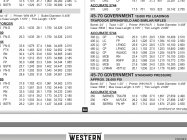Make darn SURE that, your Life Insurance, is Paid up !
Shooting an, 1873 "Clone" that was, NEVER made for, anything bigger than, a low pressure .45-70.. YIKES !
You gonna have,.. a THIRD EyeBall,. ( probably )
I would be using, a MODERN, Marlin 1895 Rifle or, a "good" 1886 Winchester,.. Minimum !
Sorry to be,.. a "Debbie Downer",.. but,.. BE careful !
Shooting an, 1873 "Clone" that was, NEVER made for, anything bigger than, a low pressure .45-70.. YIKES !
You gonna have,.. a THIRD EyeBall,. ( probably )
I would be using, a MODERN, Marlin 1895 Rifle or, a "good" 1886 Winchester,.. Minimum !
Sorry to be,.. a "Debbie Downer",.. but,.. BE careful !
Last edited:











